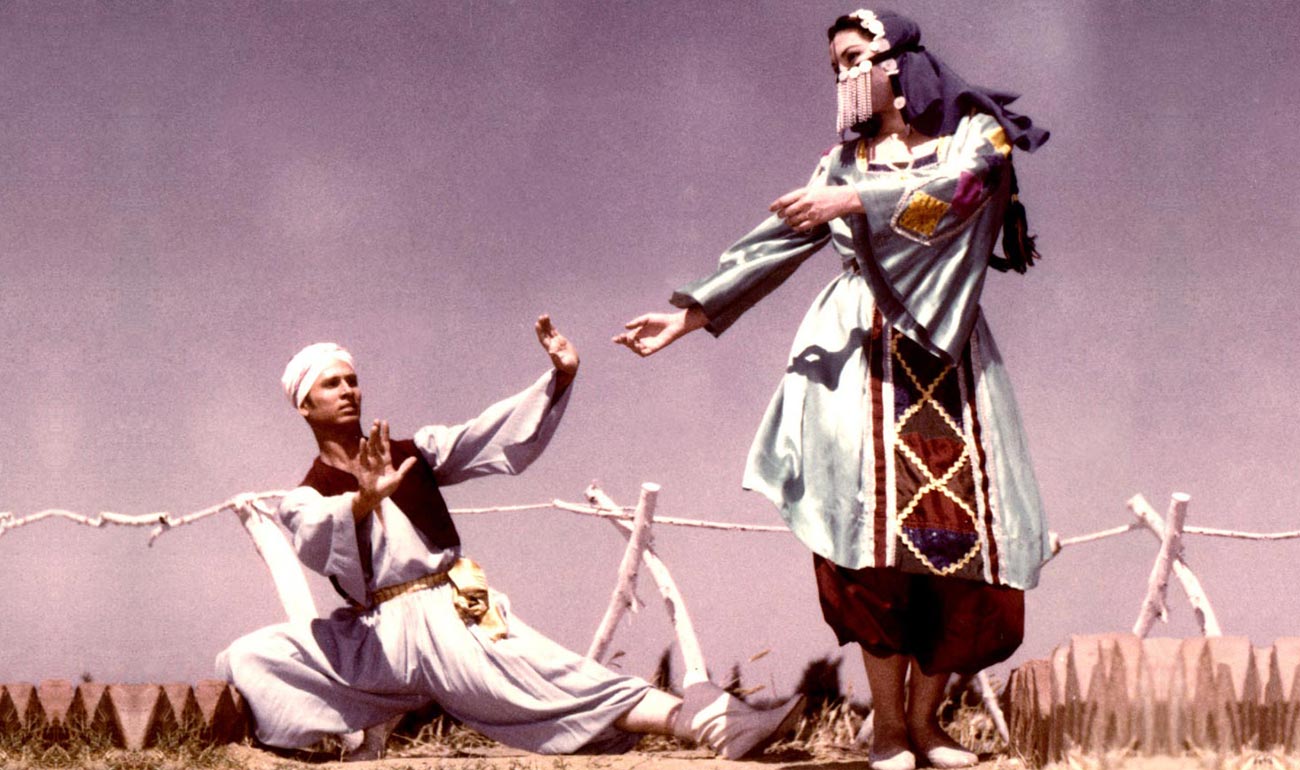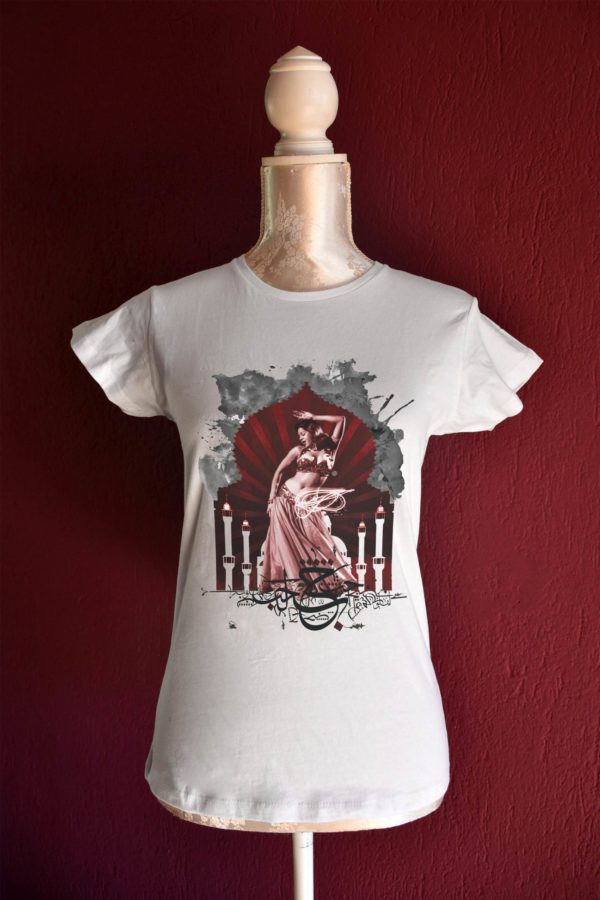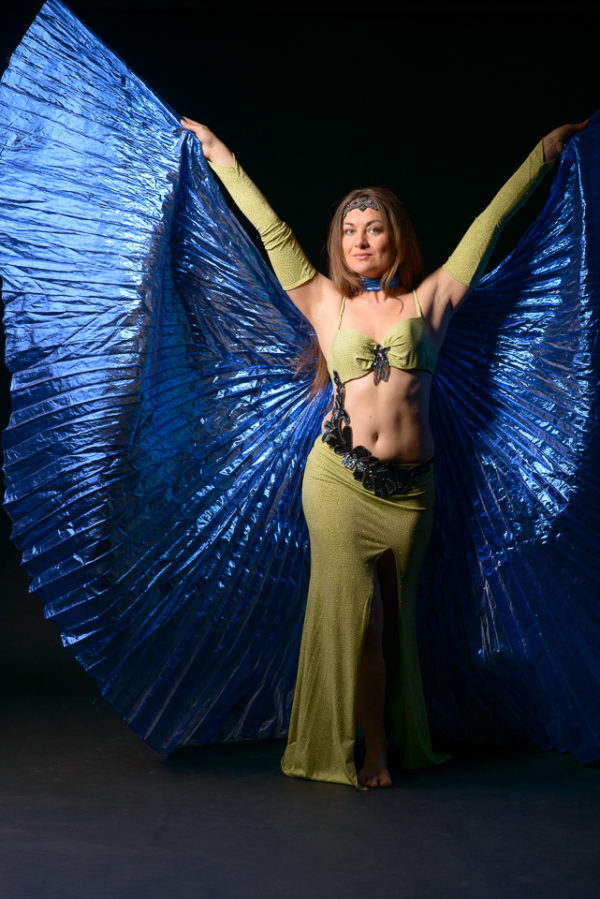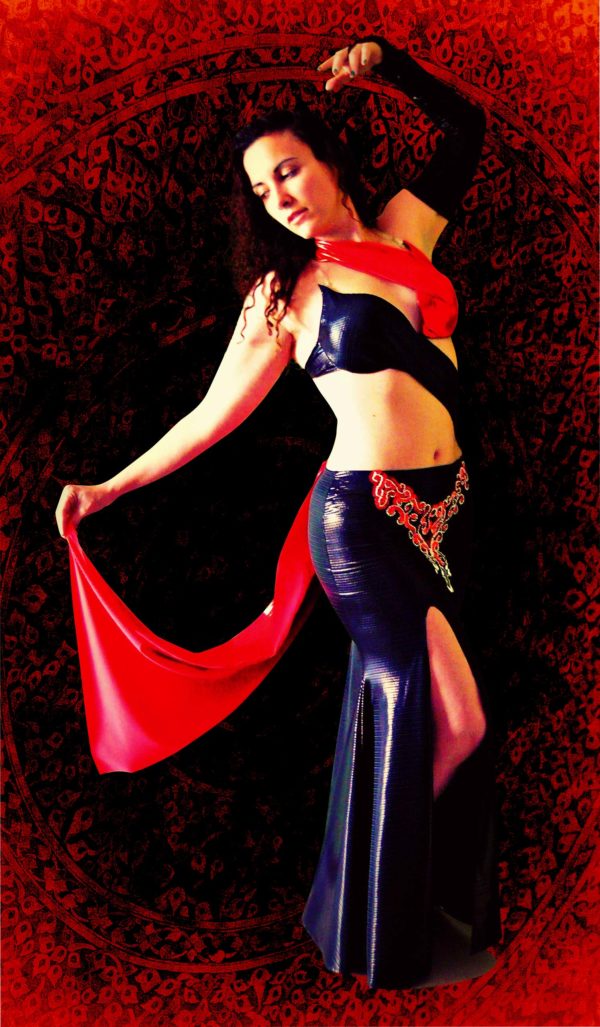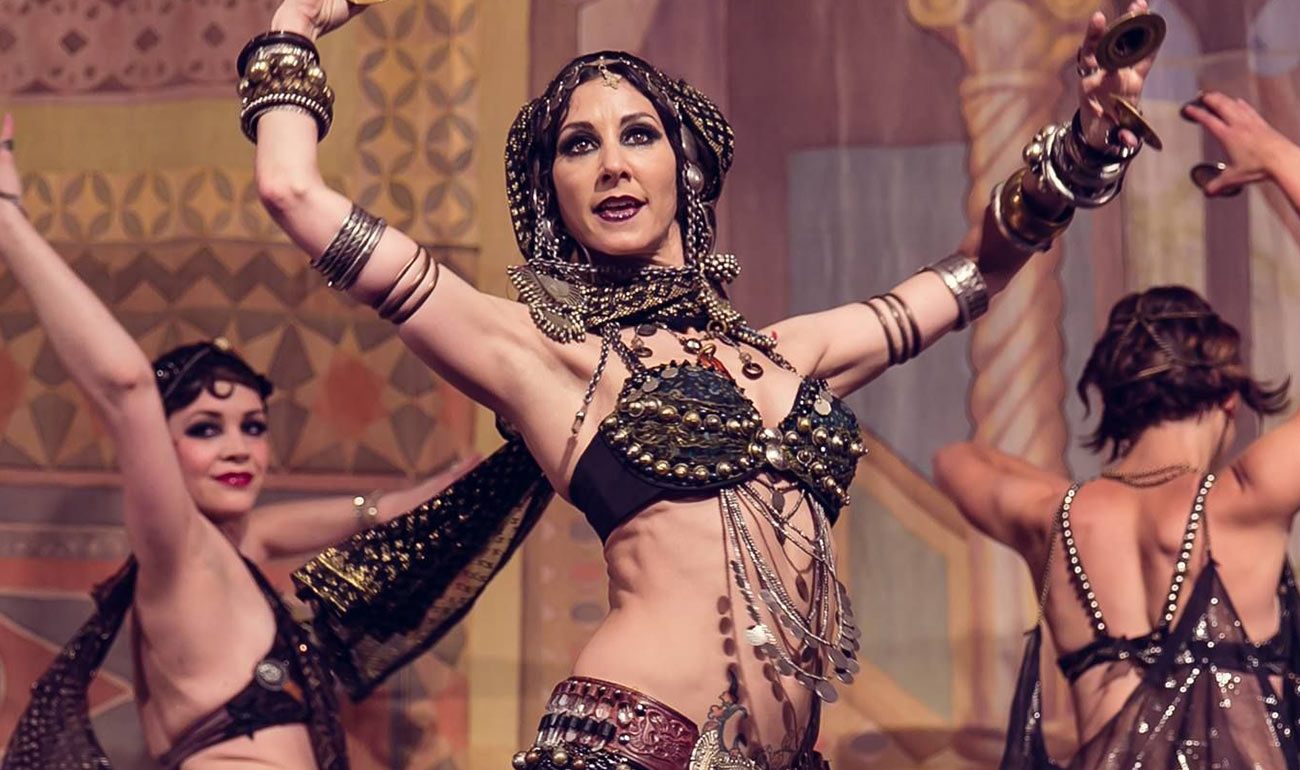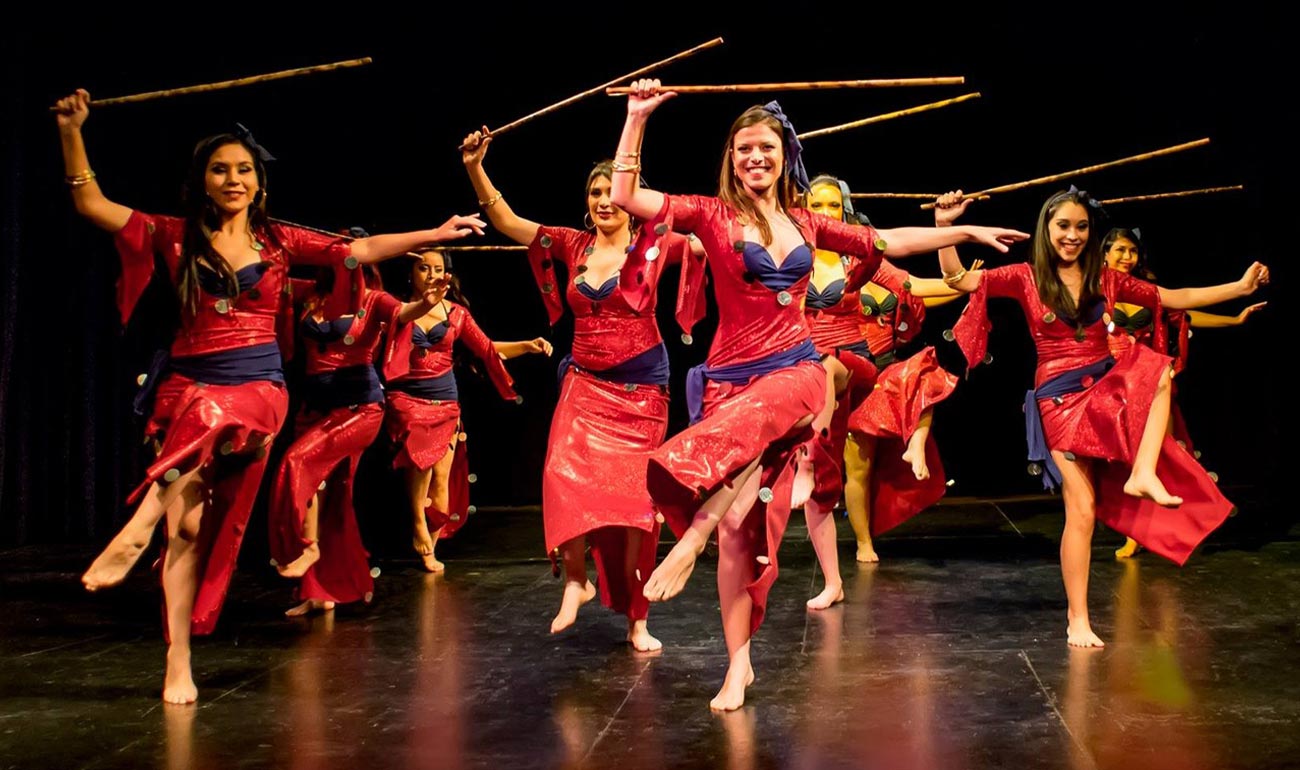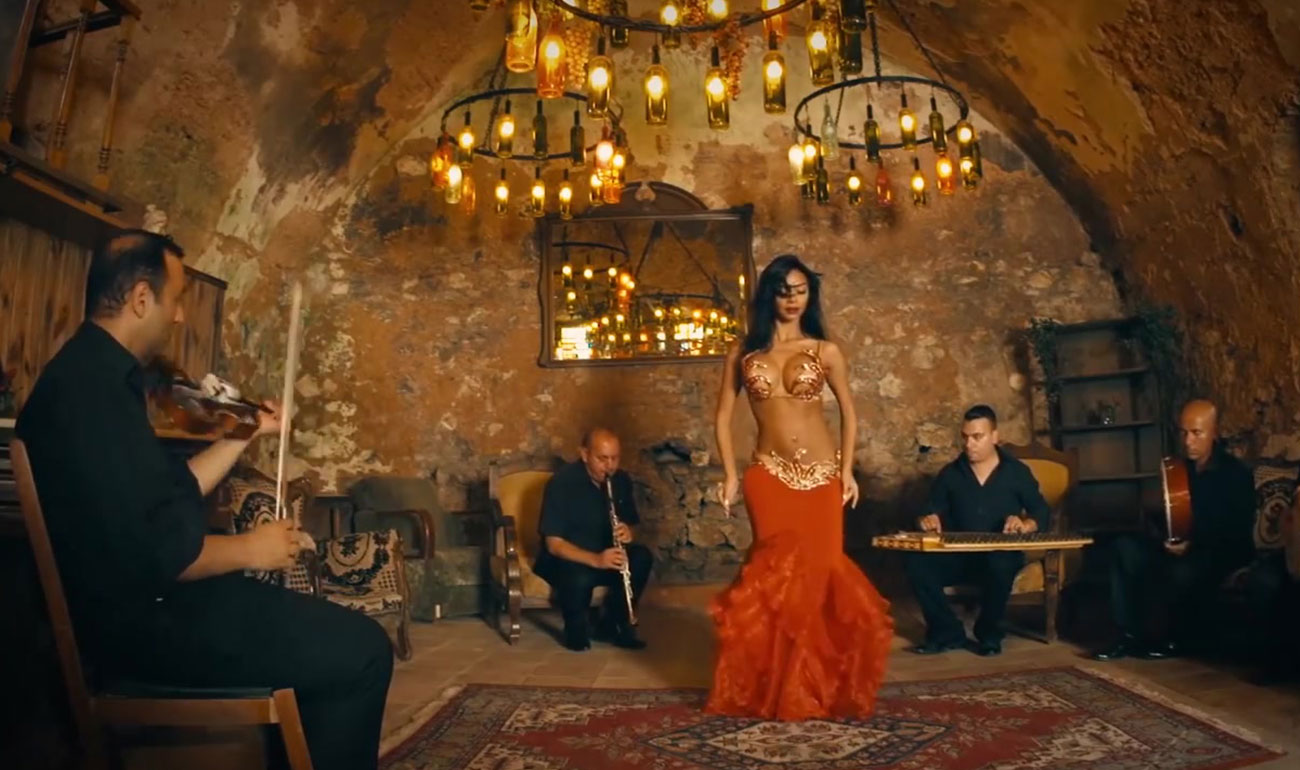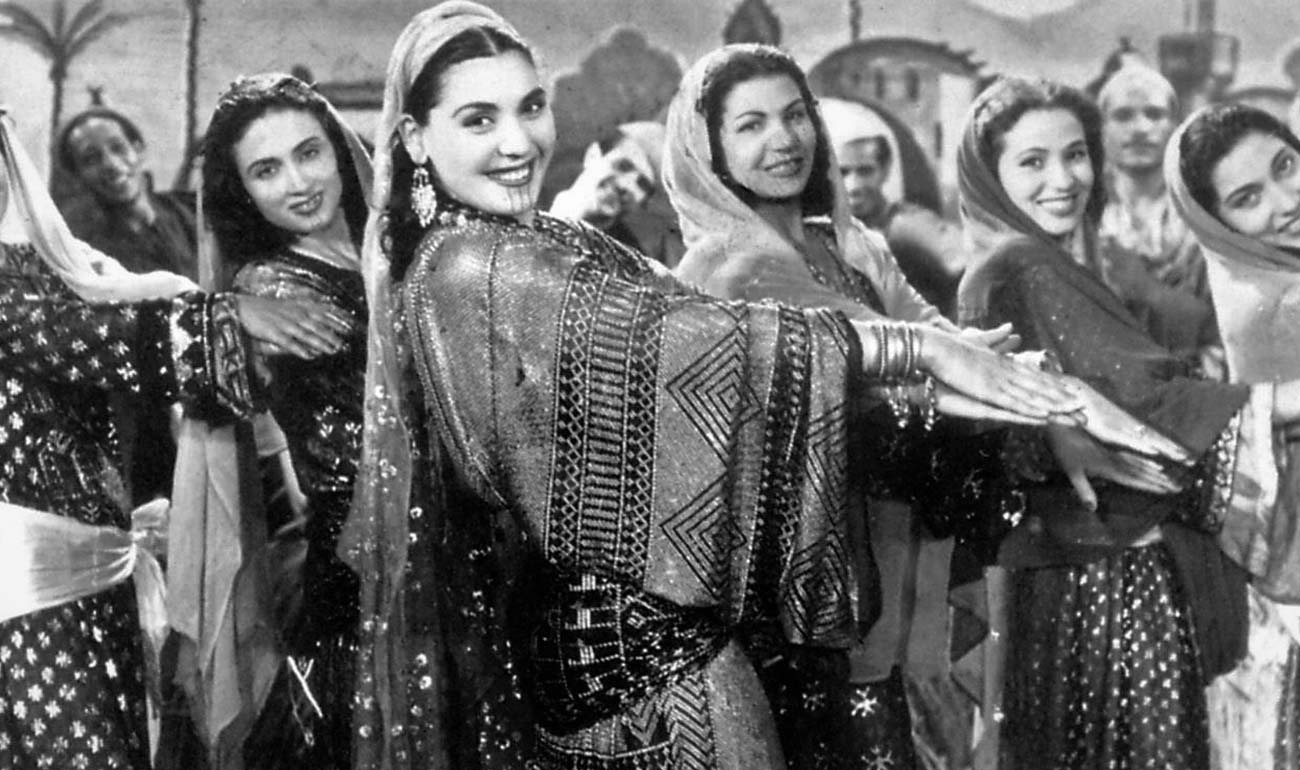
Raqs Sharqi
Raqs sharqi is not only the way the Arabic language defines oriental dance: it’s something more, a well defined and recognizable style of this dance.
The raqs sharqi also defines itself as “classical Egyptian style” and is characterized by large movements in space, perfect control of the body, many steps on the half-toe and, in general, various ideas borrowed from the western ballet. Why? What does European classical dance have to do with oriental dance?
The answer must be sought, once again, in Egypt. Here, after the upsetting effect that the dancers had had on Napoleonic troops in the late eighteenth century, a few years later, in 1834, the governor Muhammad Ali issued an edict that banned dancers and prostitutes from Cairo: this was how the dancers for some years move to Upper Egypt. But in 1850 the ban declined and many of them returned to Cairo, especially in Muhammad Ali Street.
In 1893, with the great Universal Fair of Chicago, oriental dance made its appearance in the West and, shortly thereafter, the fashion of Orientalism broke out, or rather: this fashion, which already existed, for example, in the visual arts , spreads even to include dance itself.
On this wave, in 1926 the Casino Opera was opened in Cairo, a place founded by Badia Masabni, a dancer of Syrian origin: and it is precisely here that the sharqi style was officially born. Many of the Badia dancers, such as Tahiya Karioka and Samia Gamal, also become famous stars in the nascent film industry, and the raqs sharqi is codified and spreads like the classic oriental style, which still maintains these characteristics and this international reputation.
Between 1960 and 1980, Sohair Zaki, Fifi Abdou, Nagwa Fouad and Dalilah stand out: still very popular today, many of them choreography and perform with the orchestra and a theatrical setting. Nelly Mazloum and Mahmoud Reda are known for the incorporation of ballet elements, and their influence is still present in modern Egyptian dancers today.
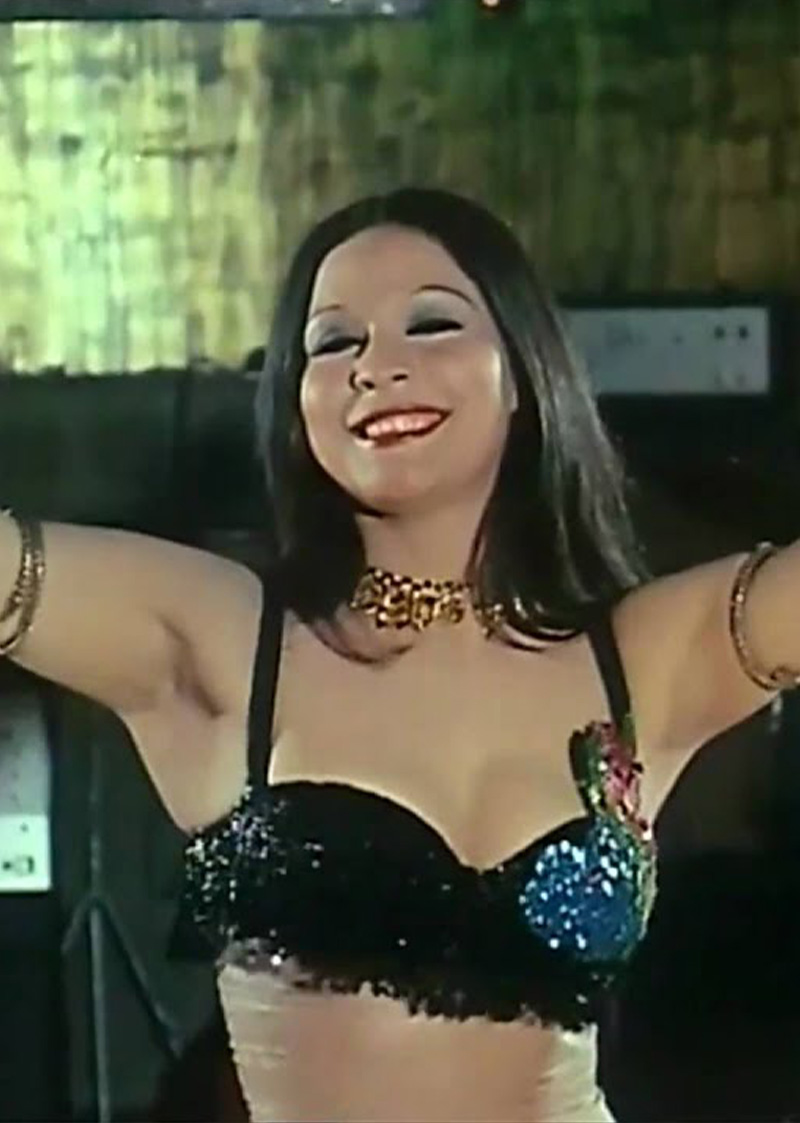
Soheir Zaki
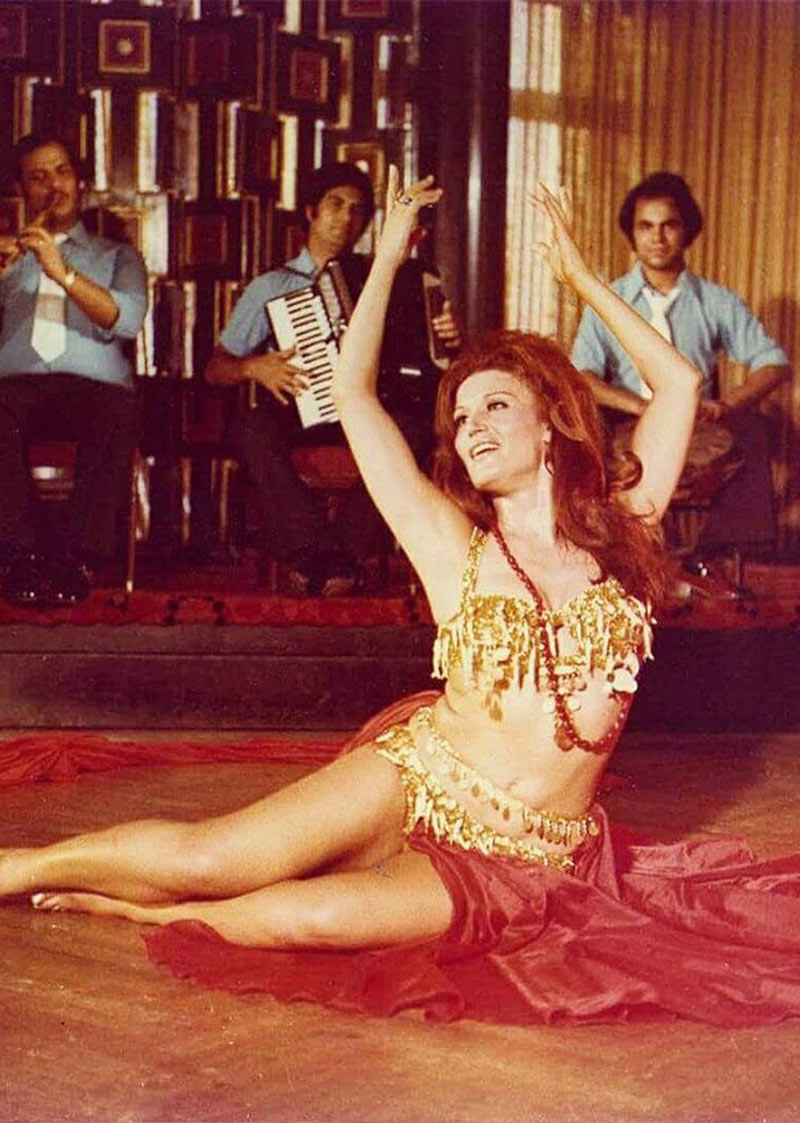
Nagwa Fouad
ARABESQUE, HALF TOE AND ARM TURNS
The popular style, Baladi, was not suitable for the stage, it could not satisfy the general public, especially the western one. The dancers had to move in a larger space on the stage, so that each step was better appreciated even by those who sat far away. So Badia and her dancers took inspiration from classical ballet and other forms of western dance, they learned to be lighter, on the half toe, in order to move more easily; they began to extend the upper part of their body further and to add sinuous, fluid and refined movements, but also of greater impact such as the turns of arms to their traditional repertoire of pelvis and isolations. Badia is also remembered for adding Western instruments to Arabic music, thus creating the classical orchestral composition for sharqi.
Shop some item inspired by Artemisia
THE EVOLUTION OF COSTUMES
Even the costumes became more elaborate and shiny, with lines that pleased the Orientalism fantasies of the patrons. To perform this style, the dancers wore a wide skirt, a rigid belt with beads and fringes and a bodice or bra.
Since the 1950s, In Egypt it has been forbidden for dancers to perform publicly in the uncovered navel or wear too skimpy costumes. Some dancers prefer a long one-piece lycra dress with strategically placed cutouts filled with transparent fabric. If you wear a separate bra and skirt, a belt is rarely used and any embellishment is embroidered directly on the tight and elegant lycra skirt. A flesh-colored body must be worn to cover the belly. Egyptian dancers traditionally danced barefoot, but nowadays they often wear sandals and even high heels.
ORIENTAL DANCE TODAY
Despite the international fame, unfortunately oriental dance is still not well seen in Egypt and in the Arab world in general, as it is not considered a respectable profession, despite the attempts of different groups to change the perception and despite it is still very widespread in wedding receptions and other celebratory events. Most of the dancers who perform for tourists in Egypt today are foreigners, both from Europe and from other parts of the Arab world (especially Lebanon). Dancers in Egypt have restrictions both for their costumes and for their movements: dancing on the ground and dancing in public with the navel uncovered is in fact not allowed.
Egyptian state television no longer broadcasts belly dancing after the dancer Rubi upset some members of parliament, who have instituted a ban on showing the navel even in music video clips. The idea of creating a state institute for the training of oriental dancers in Egypt was shelved in 2009 because according to an MP, this type of dance “seriously challenges the traditions of Egyptian society and blatantly violates the constitution”.
